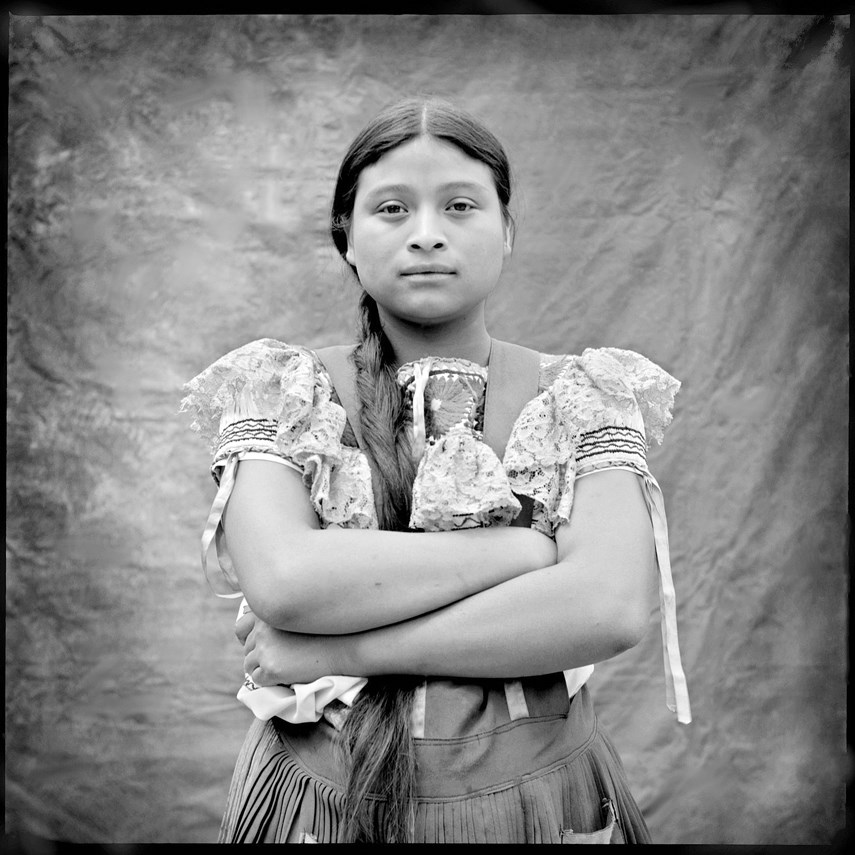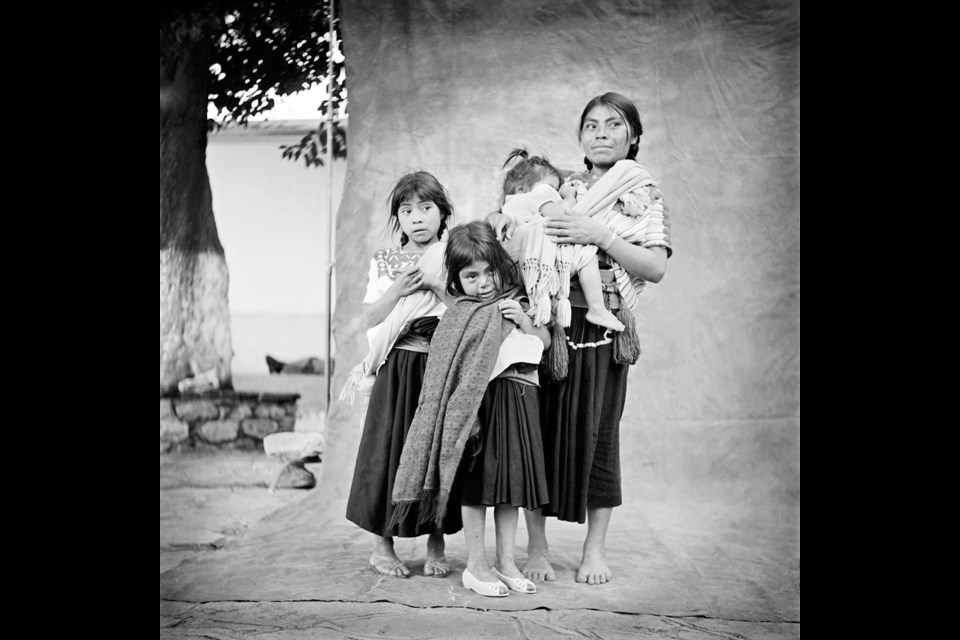The Mayan Dress Code: Legacy and Continuity in Chiapas, Mexico (Textiles by Mayan women and photographs by Cisco Dietz), Ferry Building Gallery. Sept. 11 - 23. Opening Reception: Tuesday, Sept. 11, 6 p.m. Curator’s Talk: Sunday, Sept. 16, 2 p.m. For more details visit ferrybuildinggallery.com.
It was in the old part of town where photographer Cisco Dietz found a way to once more make taking photos feel new again.
He came to San Cristóbal, the cultural capital of Chiapas, Mexico, 25 years ago, by way of New Orleans and before that, Los Angeles. After working for decades as a photographer balancing commercial, editorial and artistic photo projects, he was done, he felt, with standing behind the camera lens, according to Dietz.
“When I got here I had burnt out on photography. It had just been too much,” he says.
Opting to hit the pause button on taking professional photos himself, Dietz, whose spirit soared amongst the colonial architecture and regional history surrounding San Cristóbal, decided to stay and teach people to take photos for themselves.
For years, Dietz was steadfast in his resistance to taking his own shots even as he diligently taught photography at his Apertours Photography Workshop. Then one day something clicked while he was out with a group of students near his home in the old part of San Cristóbal.
“I said, ‘Guys, today we’re going to do something fun. There’s no cars on my street, I can easily stop traffic on it, the light’s great. I’m going to set up a background and I want you guys to go out and do these kinds of pictures: We’ll get people walking by and you can practise setting up.’”
Moved by the people that crossed their path, many of whom wore traditional Mayan clothing, Dietz decided in that moment to undertake a new project that considered the people of an ancient land coming to grips with the modern world in what would become Gente De Chiapas, or Faces of a State.
“I just was lucky to be at the right spot at the right time,” he says, noting his captivation with the traditional clothing, wool skirts, embroidered blouses and more that many in the region had been wearing for millennia.

Some of those photos, originally taken in the late 1990s and early 2000s around Chiapas and which make up Gente De Chiapas, will be on display during an upcoming exhibition at the Ferry Building Gallery in West Vancouver.
The Mayan Dress Code: Legacy and Continuity in Chiapas, Mexico, running Sept. 11-23, will showcase textiles by Mayan women, alongside Dietz’s photos, in an effort to communicate the rich history of Mayan weaving and its relationship to Chiapas and Mexico.
“When the Spaniards came they obviously tried to have them all wear their own clothing – Spaniard clothing, Western clothing – but the Indigenous tribes and groups resisted,” explains Dietz. “They obviously didn’t have cotton until the conquista came and so they wore other kinds of fabrics, and wool was brought in by the Spaniards, and so they had a wonderful opportunity to show their affiliation with their particular villages. Each village would have a very interesting clothing style.”
As Dietz set out to capture the faces, places and people of Chiapas in the late ’90s, he did so influenced by the portrait work of acclaimed American photographer Irving Penn.
“I’ve always been a people photographer and I love the dynamic that I could establish with these people in minutes,” notes Dietz, adding that he favoured shooting his subjects using the square format as opposed to 35 millimetre during this time, much like Penn, because it gave his shots: “amazing clarity and a lot more landscape, a lot more resources on the negative to explore.”
Armed with his 120 camera, with 12 shots on a roll, he would snap two or three pictures of each person that excited his senses. “I like black and white, and again, that’s what Penn did on most of his work – was black and white (photos) of cultures around the world.”
He adds that his contribution to the Mayan Dress Code will aim to give a point of reference to the various textiles on display, showing the faces and people that might have worn such amazing garments.
“The pictures that we’re presenting in the expo are pictures showing people in … their native dress,” says Dietz. “How did they wear that? How did they look? And how do people today sill look dressing in this clothing?”
Dietz, who was born in Los Angeles and studied film at UCLA, said he was never cut out for Hollywood and the dizzying highs and crashing lows of the film industry. He favoured the precision of the still shot. “A whole story can be told in an instant,” he notes.
And while it takes more than an instant to guide visitors through the faces of a state, as per the title of his photo collection, he’s hoping the Mayan Dress Code can show people a “sense of marvel, a sense of the magic, a sense of the power of the Indigenous people.”
Dietz is still moved when he recalls those early interactions with the people of his adopted Mexican hometown, even when his own language limitations, at the time, could have had the potential to derail everything.
“It wasn’t a great informational exchange,” he admits, before stressing: “but it was a connection.”



